Author: MUHAMMAD IBRAR YOUNAS / SUNWODA TEAM
1.Introduction
Renewable energy sources such as solar and wind power have emerged as promising solutions to address environmental issues and the global energy crisis. Photovoltaic (PV) power in particular has seen widespread adoption. Extensive research has focused on homes equipped with PV battery systems, which serve as integral components of smart grids by acting as both energy consumers and suppliers. However, inevitable seasonal and hourly fluctuations in PV power output can diminish economic returns due to low utilization rates. Battery energy storage systems (BESSs) acting as energy buffers can enhance the self-consumption rate of PV power by storing surplus energy and releasing it on demand. Appropriately sizing the capacity of BESSs is key to guaranteeing adequate performance while minimizing investment costs. Insufficient capacity reduces the self-consumption of PV power while oversizing causes resource waste and excessive expenses.
Significantly varying load demands and power generation across different climates and seasons can impact the optimal BESS size for long-term returns. An optimal capacity must account for seasonal dynamics to yield economic benefits over an extended operational lifetime.
This article offers a comprehensive, step-by-step overview of the intricate process of calculating energy consumption, sizing solar PV system capacity, selecting appropriately-sized inverters, and configuring Lithium Iron Phosphate (LFP) battery storage tailored for residential settings.
1.1. Solar Battery Backup System Functionality
Core elements of solar battery backup systems serve three key functions:
1. solar panel arrays generate power
2. inverters regulate supply
3. battery banks provide storage
Optimal configuration and component selection are vital for an efficient system that maximizes self-consumption of clean energy.
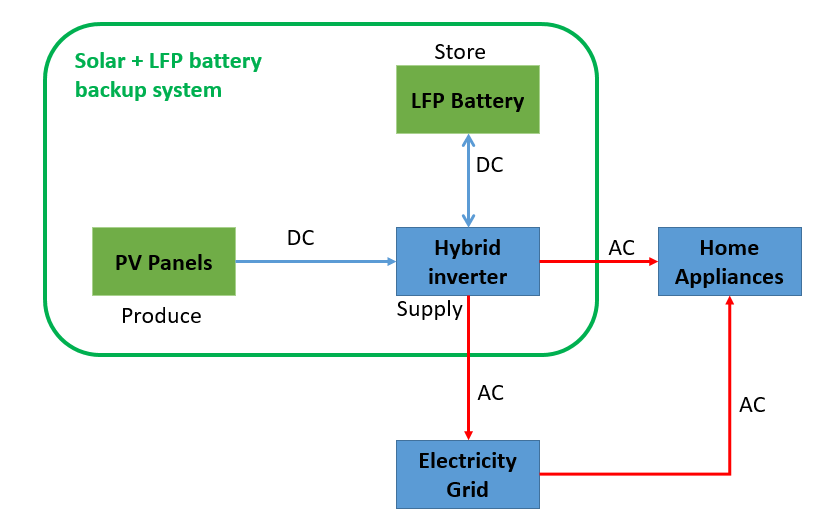
Exploring the synergy among the three essential components of a solar battery backup system reveals a seamless operational flow. The solar panels initiate the generation of DC electricity, subsequently employed by the inverter to store energy in the battery, as depicted below. Following this, the hybrid inverter presents two alternatives:
• Conversion of DC from the battery into AC (Alternating Current) to supply power during a power failure in your house.
• Transmission of excess electricity to your local utility company, resulting in financial compensation.
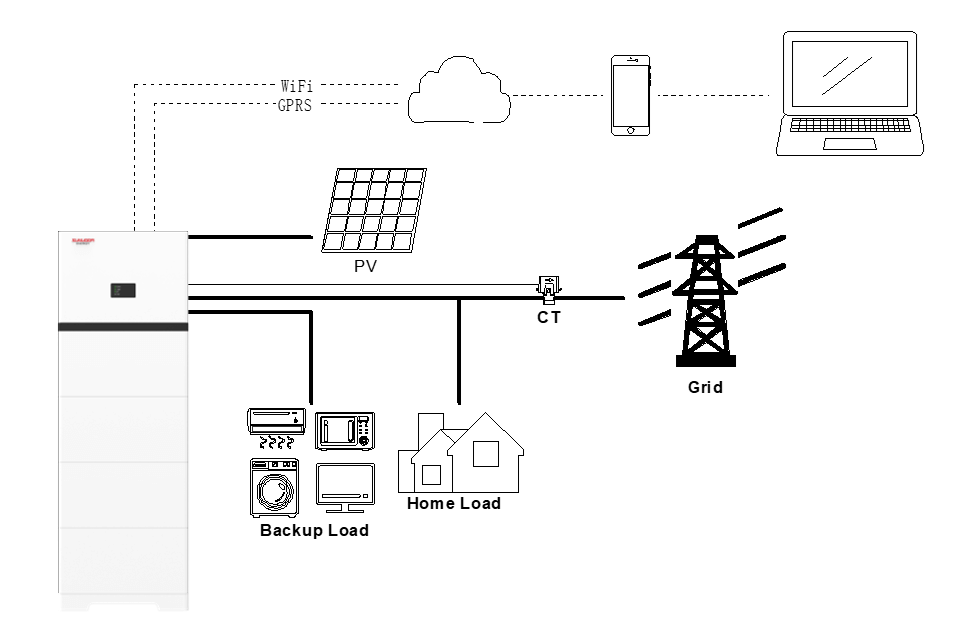
2.Load analysis that makes sense
Improperly sizing an energy storage system is a surefire way to gain an unhappy customer. To prevent that, you must first talk to your customers and figure out what the essential loads are that need to be powered. For most people, they may initially want to power their entire home – until they see how much it will cost. Boil down to the essentials they want to power (i.e. refrigerator, a few lights, the modem/router, etc.). A standard-sized system in the 10-20 kilowatt-hour (kWh) range will power the essentials for up to 12-24 hours.
2.1. Determining Electricity Usage
The first step is accurately assessing the home’s annual and peak electricity consumption. This establishes the baseline power and energy requirements the solar PV system must supply. There are two primary methods:
2.2. Utility Bill Analysis
Analyzing monthly electricity bills over the past year provides insights into the home’s average daily energy usage over different seasons in kWh along with peak demand in kW. Annual energy consumption indicates the total amount of renewable energy the solar panels must produce each year. The peak demand determines the rated solar power capacity needed.
|
Month |
kWh Usage |
|
January |
750 |
|
February |
800 |
|
March |
700 |
|
April |
650 |
|
May |
750 |
|
June |
600 |
|
July |
850 |
|
August |
900 |
|
September |
600 |
|
October |
750 |
|
November |
620 |
|
December |
700 |
Calculate the average monthly and daily consumption:
|
Average Monthly Usage |
Average Daily Usage |
|
660 kWh |
22 kWh |
Use the formulas below as a general guideline when attempting to determine a homeowner's power requirements:

2.3. Load List Calculation
Creating an appliance-by-appliance load list outlines the rated wattage of all electrical devices in the household. Multiplying this by the average daily usage hours for each device sums to the home’s overall average daily energy usage. The load list also highlights the simultaneous peak power demand by summing the highest wattage appliances that may run together at one time.
Example:
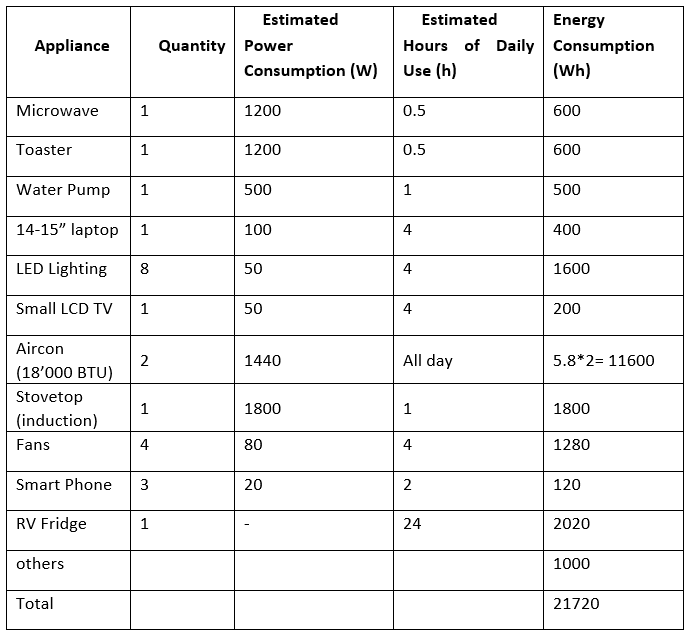
3. Sizing the Solar PV System
The solar PV system capacity must reliably meet all the household electrical loads as well as have surplus generation to charge the battery bank. Therefore, the system size depends on available roof space and total power requirements. Key steps for properly sizing a solar PV system are:
3.1. Determine Number of PV Modules
Divide the home’s annual energy usage in kWh by the nominal annual AC energy production in kWh from each PV module to calculate the minimum number of modules needed. The module's DC rating is multiplied by the inverter efficiency, wiring losses and other derating to estimate actual AC production.
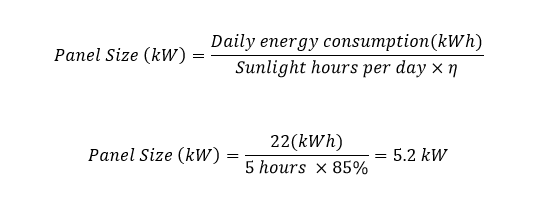
3.2. Add Safety Margin + Efficiency
Finally, increase PV array capacity by 10-20% above the minimum required to account for real-world losses from panel aging, dust buildup, wiring inefficiencies, etc. This prevents the system from underperforming over its 25-year lifespan.

3.3. Select PV Module Power Rating
Module wattages typically range from 330W to 550W for residential systems. Select module wattages based on roof space constraints. More powerful panels reduce total module count for a given power output. We will choose the higher-wattage PV panels.
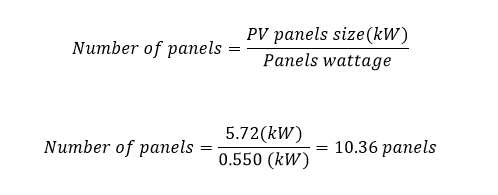
So we make it 11 panels for more accuracy.
Properly sizing the solar PV array capacity ensures it can provide 100% of the household’s annual electrical needs with extra electricity to charge the battery bank.
For Partial load:
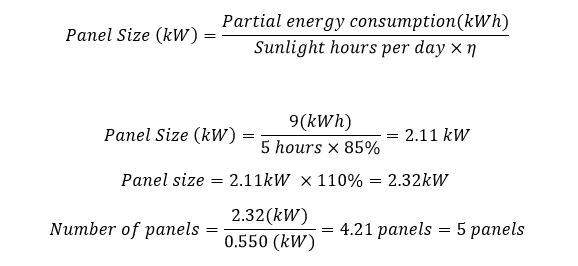
4. Inverter Selection
Inverters play an essential role in converting DC current from the PV array into grid-quality AC power for household distribution. Therefore, inverter sizing and features must match the solar system design. Key inverter sizing considerations are:
How big of an inverter do I need??
There are 2 common methods used to properly size an inverter:
1. Size the inverter according to the solar size + add a 10% oversize factor
2. Calculate peak power or maximum wattage required by the inverter at any instant of the day
4.1. Peak Power Rating
The inverter power rating must exceed the solar array’s peak DC output by at least 20-30% to prevent current limiting and bottlenecks. High-efficiency MPPT tracking ensures optimal harvesting from the panels across weather conditions.
4.2. Surge Capacity and Safety Factor
The inverter should have 30-50% excess surge capacity above peak loads for motor startup loads without tripping. In normal operation, loading above 50% of the rated capacity reduces efficiency and lifespan.
4.3. Future Expansion
Oversizing the inverter by 10-20% above the home’s current loads provides headroom for adding panels, batteries, etc. in the future without replacement.

We need to have a good look at all the loads and figure out what the maximum Wattage is that the inverter needs to provide at any given moment in time. This means sizing for those appliances that realistically can be switched on at the same time, including those we have no control over (such as a fridge or freezer, where the thermostat switches the compressor on and off at random moments). There is no hard & fast rule for this, it really comes down to what we believe to be reasonable. It is reasonable to expect that the homeowners do not switch on the microwave, hair dryer, coffee maker, and bread toaster all at the same time (each of these is around 1,200 watts). Instead, it’s reasonable to expect all those large loads to take turns, or possibly size for two simultaneous ones (such as a microwave and coffee maker).
Some loads have large startup currents that need to be taken into account. Typically motors, compressors, and pumps can require 3 to 5 times as much current (Wattage) to get started vs. what they need while running. Inverter spec sheets show how much the inverter can supply continuously and for short periods. Typically, even the cheaper inverters will supply at least twice their rated (continuous) output for a short time.
1- for partial load:

2- Full load:

5. Sizing the LFP Battery Bank
The ESS battery is the most expensive component of a grid-interactive battery backup energy storage system. As such, sales personnel are tempted to reduce ESS capacity to drive down first (initial) costs, reduce sticker shock, and increase sales. Reducing ESS capacity without properly considering customer loads and setting customer expectations is the number one cause of buyer’s remorse.
LFP batteries provide backup power during grid outages along with maximizing solar self-consumption. Battery capacity depends on the desired autonomy duration and allowable depth of discharge. The key steps for sizing battery banks correctly are:
Batteries should not be depleted below 90%, charge to prevent damage. This depth of discharge limit must be factored into the usable energy. Divide the daily average energy consumption by the depth of discharge percentage to determine the minimum battery capacity in kWh.

For Partial backup:
Decide the number of hours the battery bank must supply the critical loads during grid failures. Most homeowners select 3 to 5 hours of autonomy for partial backup. Outline the essential loads needing backup power and their rated wattages - lighting, refrigerator, medical devices, etc. This minimized the battery capacity needed. This method is mostly used in partial backup.

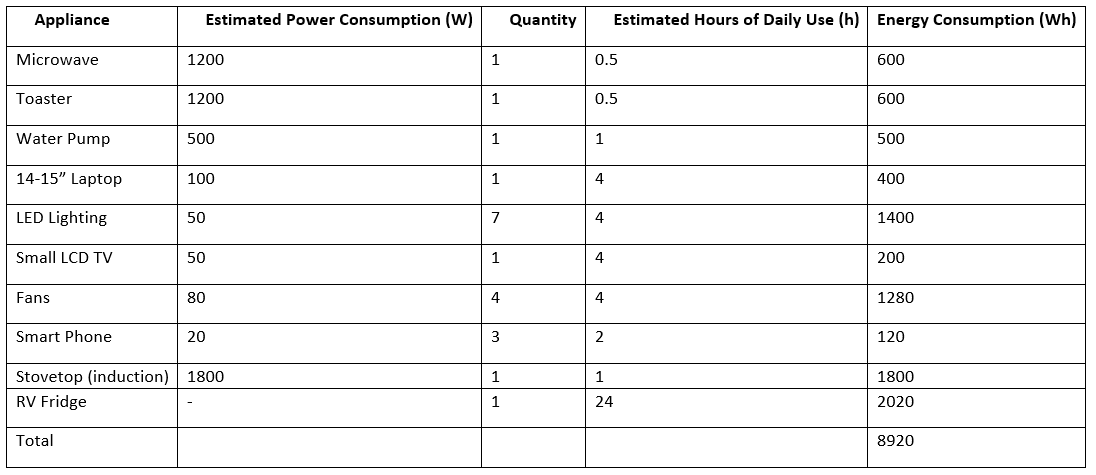
So you need a 9 kWh battery backup.
Properly sizing the LFP battery bank reduces capacity requirements while still providing essential backup functionality during grid failures. Along with the appropriately sized solar PV array and inverter, an integrated renewable energy system can provide reliable and sustainable energy independence for homes.
6. LFP Battery Benefits Without Solar PV
While solar PV enables renewable energy harvesting, LFP battery banks provide significant grid resilience and cost optimization benefits even without any onsite solar generation. By taking advantage of grid power rate differences between expensive peak period and cheaper nighttime electricity, batteries can be profitably cycled daily. Key advantages are:
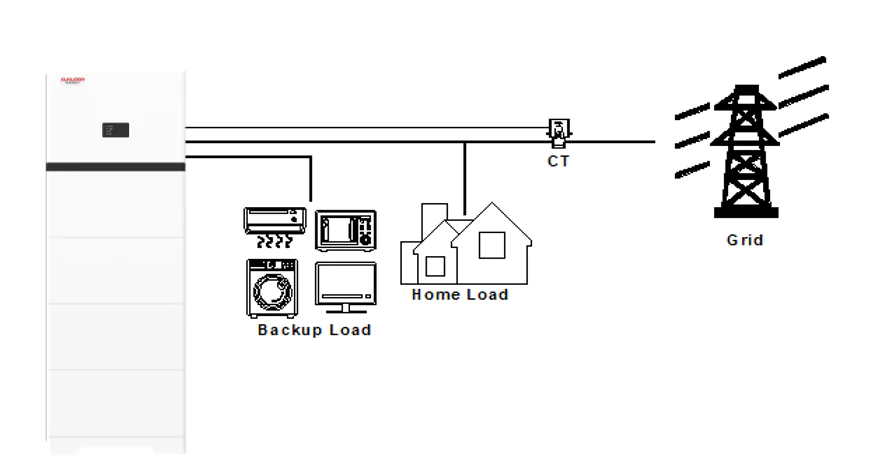
1. Reduce Peak Load Charges
Businesses paying demand charges based on their maximum grid power draw can cut fees by using stored battery power during peak production hours instead. This flattens the load profile seen by the utility.
2. Shift Loads to Off-Peak Times
Batteries allow households to store grid electricity at night when rates can be 50% lower and discharge it during the afternoon when grid power is most expensive, reducing overall costs.
3. Improve Power Reliability
LFP batteries act as an uninterruptable power supply (UPS), providing seamless backup power to ride through short outages and voltage fluctuations for sensitive electronics. This prevents shutdowns and data loss.
4. Extra Incentives
Many utilities offer financial incentives to install grid-integrated batteries to improve local infrastructure flexibility and peak load management through stored capacity.
Final Thought
In summary, properly sizing LFP batteries, solar PV systems, and inverters ensures residential renewable energy systems can maintain reliable operation through extreme weather, grid outages, and decades of service.
For those seeking superior energy solutions, Sunwoda Energy stands as a global leader, delivering unparalleled quality and cost-effectiveness. As a top 10 world battery manufacturer, our in-house manufacturing ensures the highest standards. With a diverse product portfolio, including Atrix, Monawall, SunESS, and SunESS Power, capable of operating below zero temperatures, we cater to residential, C&I, and utility-level needs. With over 14 production bases worldwide, Sunwoda Energy is your trusted partner, offering cutting-edge solutions for customers across the globe.
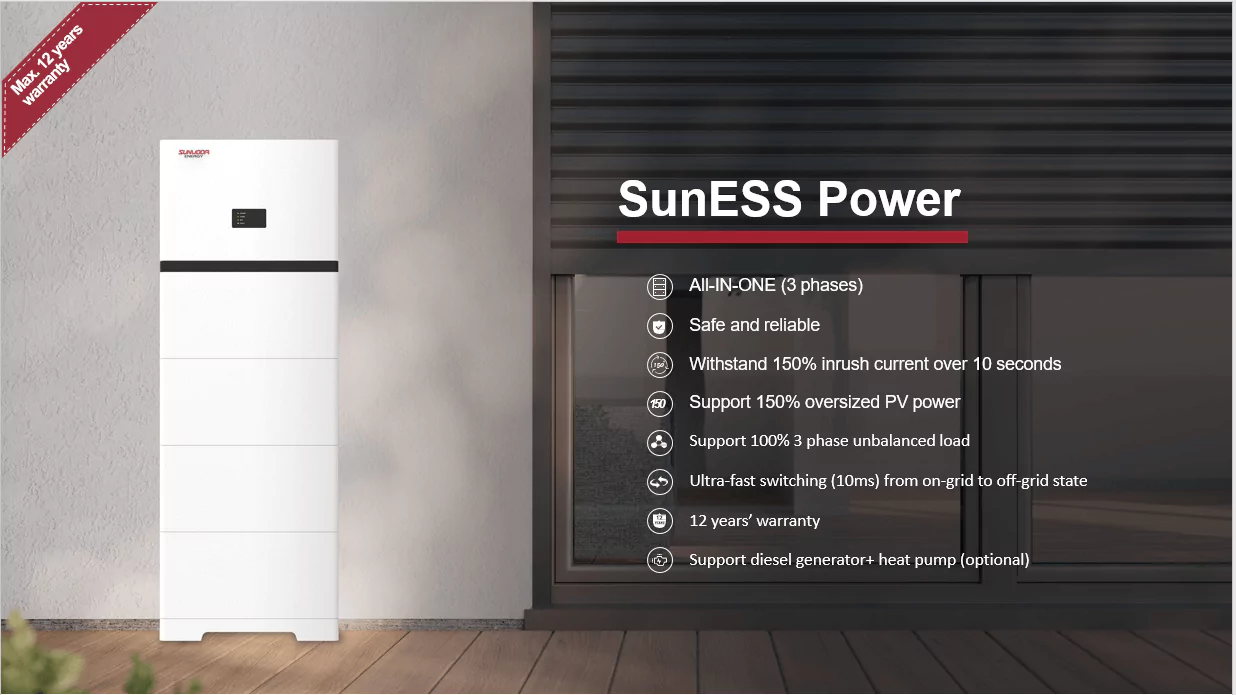
Note: Please contact us for professional advice and proper sizing of your BESS. The above calculations are only for reference.